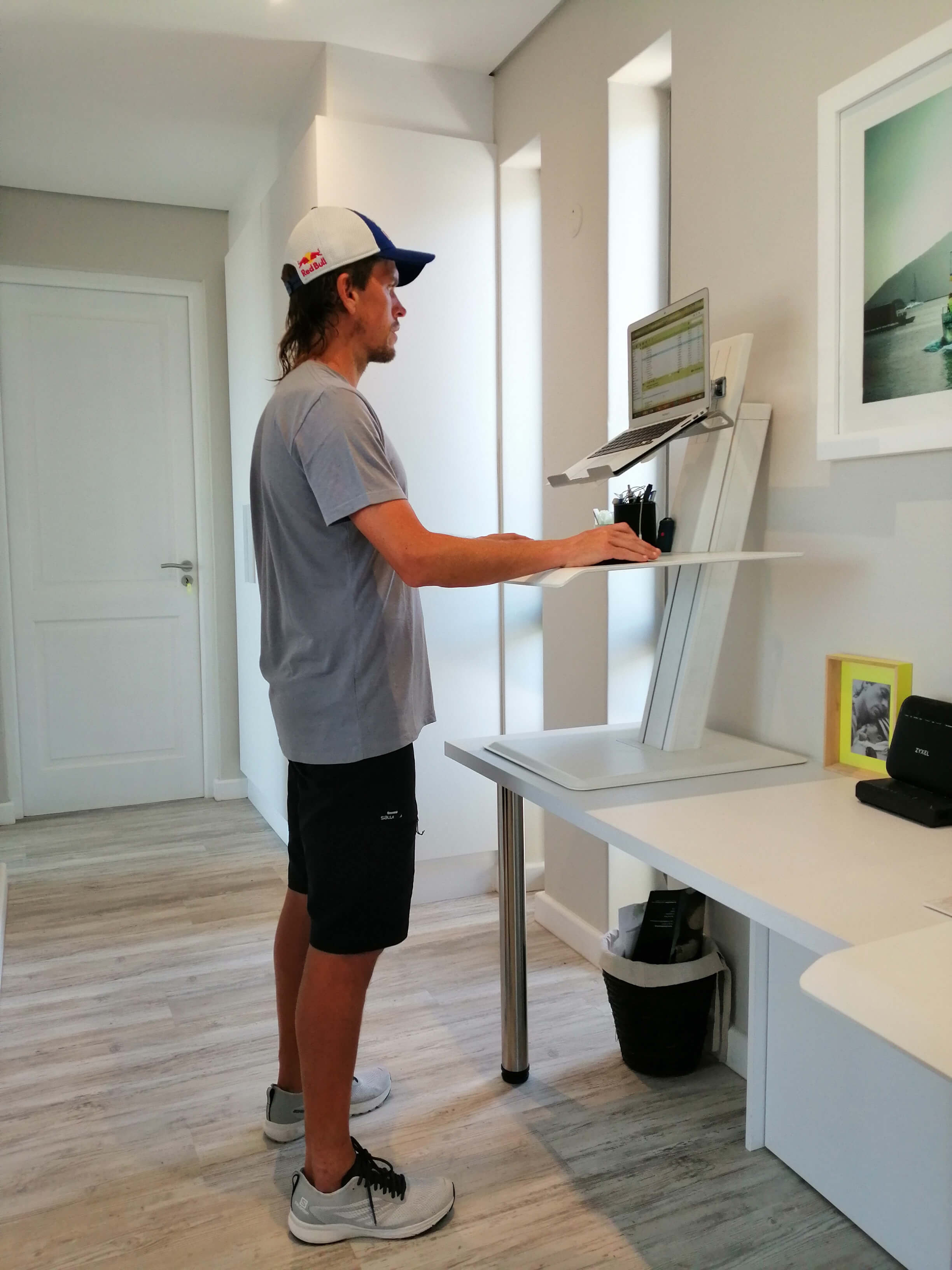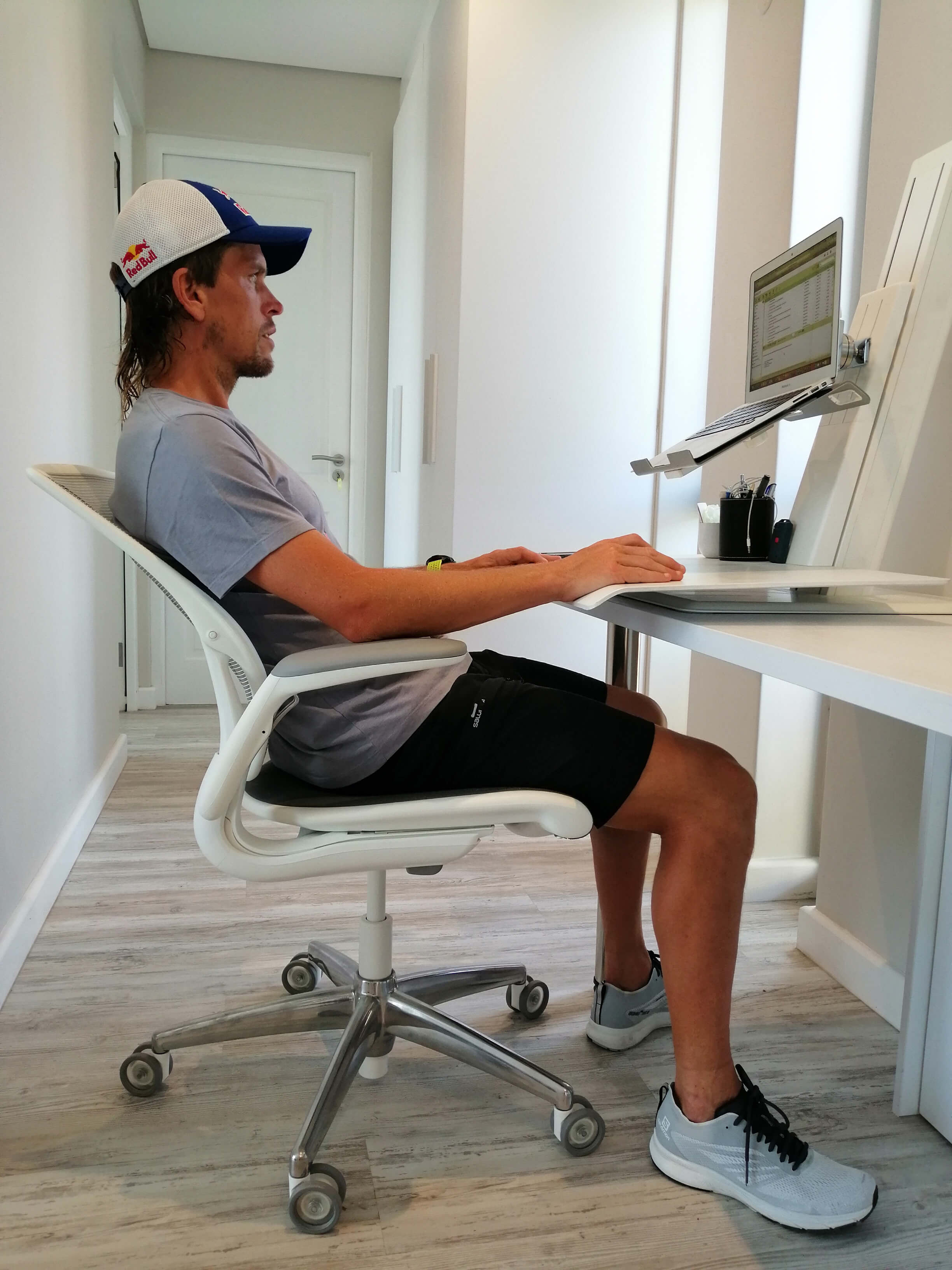

It seems paradoxical, but in today’s world even professional athletes spend time at their desks. Maybe not 9 to 5, but sponsorship deals require a significant social media presence and that, as we all know, means screen time. One of South Africa’s top athletes shares how the hours he spends at his desk are just as important to his training as his time on the trails. In fact, ultra-distance runner, Ryan Sandes, reckons that how you work at your computer can drastically impact your athletic performance.
1. How long have you been a professional athlete?
I’ve been a professional ultra-distance trail runner for just over 14 years now.
2. Have you ever worked in an office environment?
I studied Quantity Surveying at the University of Cape Town, and after qualifying I worked for a property development company for just over two years. I spent most of my day behind a computer for hours on end. Running is definitely more exciting, but I haven’t completely escaped my desk!
3. So you’d say that it’s a misconception that professional athletes never spend time at a desk?
Definitely. You’d be surprised how much admin a professional athlete needs to stay on top of. It’s so important for me to keep a handle on the admin side of things, and I do enjoy that part of the job. My weeks generally vary quite a bit depending on travel, but on average I would say that I spend anything from two to six hours a day at my computer.
4. How does time at a desk impact you physically – past and present?
When I first started out as a professional athlete, I didn’t need to spend nearly as much time at my desk, so the impact was minimal. But this was largely because social media wasn’t nearly as popular then. Today it’s a big part of sponsorship deals and takes a huge chunk of my time. Add to this the fact that I’m not getting any younger and am not as bulletproof as I was a few years back! So before I changed my desk set up, I found myself experiencing bad headaches, combined with neck and back pain. I figured out that this happened when my posture was compromised – at my desk or even when driving or sitting in meetings with sponsors. I’ve also done a lot of research into how posture impacts running and there is a clear link between posture and running style. With this sport becoming more and more competitive, I’m always interested in any marginal gain so I’m constantly on the lookout as to how I can improve my form. So I guess what I’m saying is that sitting at a conventional desk made me feel bad, and perform sub-optimally, so I made some changes!
5. Can you tell us about your new office set up?
Sure. Once I realised that I needed to focus on maintaining good posture to avoid pain and run at my full potential, having the correct office set up became really important. That and consciously managing my screen time! Getting the right office set up was surprisingly easy. Humanscale is a company specialising in truly ergonomic products, and I’m using their QuickStand Eco, which is a sit/stand desk, along with the Humanscale World Chair. The QuickStand Eco is made from sustainable, non-toxic materials, which is really important to me, and it’s easy to adjust.
6. So you now work standing up?
Not exactly. The idea is not to stand and work all day, but rather to sit on a good ergonomic chair, and when you feel you need a break from your desk, or your back feels a little tight, you raise the desk height and continue working standing up. It’s a flexible system that doesn’t keep you trapped in one static position that can have really negative effects on your body.
7. Have you noticed a difference in your physical wellbeing?
Alternating between sitting and standing throughout the day is said to boost productivity, up your mood, and reduce the negative effects of desk-bound tasks. When I’m not procrastinating, I’d say this is all true!
Sometimes I return from a run and need to urgently reply to a few emails. I find it so much more comfortable to stand and work, rather than sitting down immediately. If I sit immediately on return my hip flexors shorten and my lower back gets tight, whereas the standing improves my posture and I even get to stretch! I’ve also become a lot more disciplined. Since having the Humanscale QuickStand Eco and ultra-comfortable Humanscale World chair I am not tempted to sit on the couch with my laptop or work from the kitchen counter. With my screen now raised to eye-level, I have also experienced much less neck and shoulder pain - I used to suffer from this tremendously.
8. What advice would you give to readers who participate in sport but spend a significant amount of time behind a desk?
My advice would be to ensure your office space is correctly set up to avoid jeopardising moving with ease and doing what you love. Whether you’re a runner, swimmer, cyclist or hockey player, you regularly spend time outside moving. But if you have a desk job you probably still sit for the majority of each working day. This could be anything between 6 and 10 hours a day, which is a long time and pretty much guaranteed to make you more prone to injury. This results in compensating when you’re training, and in the end compromising your performance. Find a balance between work and play, then make sure your training and desk time go hand in hand – building your body up rather than cancelling each other out.

